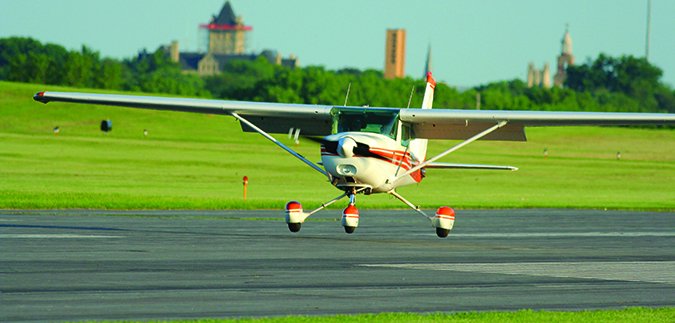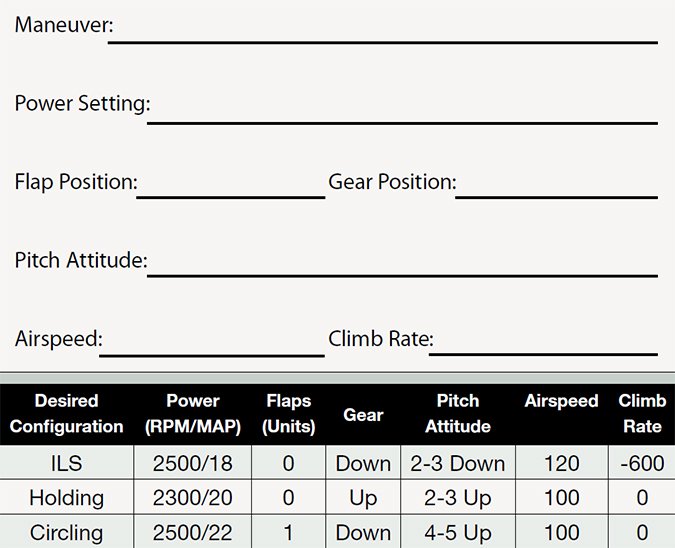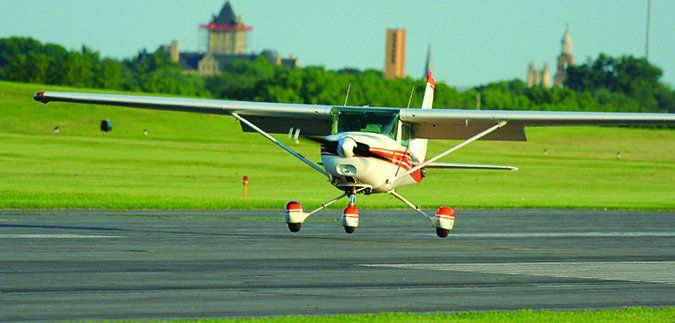Remember when you were a primary student, learning to land? When you were abeam the runway numbers on downwind, your instructor probably taught you to pull the power off to begin slowing down. Then you deployed flaps and began the descent, nailing the desired airspeeds and following the pattern to the runway. If you did it right, made your turns at the correct points and reduced power to the optimal setting, you wouldn’t need to touch the throttle again until flaring over the runway.
Imagine if you could do that every time you wanted something other than straight, level and fast. You could just adjust the power to a predetermined setting and configure the airplane for the desired maneuver, then establish the desired pitch attitude. Every time you want to climb, shoot an ILS, fly a traffic pattern, circle to land after an approach—whatever—all you have to do to is establish your predetermined set of performance variables and the maneuver you’re about to perform would come out just right. The good news is you can. The great news is you now have a perfect excuse to go do some flying: figuring out what works best for airplanes you fly.

Cracking The Code
Your primary instructor knew that if you did things the same way each time, they got easier. That’s why she wanted you to set 1600 rpm and pull out the carb heat knob abeam the numbers. The Cessna 150 I was flying settled down to 1500 rpm and about 80 KIAS with a notch of flaps before I turned base. Add another notch and slow to 70 before turning final. On final, with the runway made, add the last notch and cross the fence at 60. While the actual touchdown may have been a 5.0 on the Richter scale, at least I was on-speed and the airplane was correctly configured.
In fact, flying the airplane “on-speed” and in the desired configuration is maybe 90 percent of any maneuver, from VFR traffic patterns to flying an ILS like you’re on rails. And if you do every maneuver the same way each time, you’ll always obtain the desired performance.
But all this is nothing more than practical application of the generic algorithm that pitch plus power equals performance.
Getting pitch and power to play nicely together—along with the flaps and gear, if any—to obtain the desired performance shouldn’t be something you’ve never done before. Think about it: It’s exactly what you were doing on downwind and the rest of the way around the pattern in the 150 during your primary training. But now you’re trying to make a science out of it to help ensure you can dial in the desired performance each time, without really thinking about it or hunting for the configuration you really need.
What kinds of maneuvers am I thinking about? Well, in addition to flying an ILS or bouncing around a VFR traffic pattern, there’s holding, circling approaches, terminal-area vectors for an approach and, of course, performance maneuvers, like chandelles and lazy-8s, or ground reference maneuvers like S-turns across a road or turns on pylons. They all go better with the proper power settings and pitch attitudes.
Check the sidebar above, and use the suggested fill-in-the-blank cheat sheet if you want. Then develop something like the table of power settings at the bottom—which are based on my Beech Debonair and will work for almost any late-model Bonanza—and tape it to the instrument panel, your kneeboard or whatever. It’ll always be there. Of course, if you spend enough time flying, say, an ILS or a hold, you’ll probably memorize the required numbers, without needing to write them down. Meanwhile, let’s take a moment to refresh our understanding the pitch and power relationship.
Balancing Pitch And Power
If you recall Mike Bannon’s articles on flight energy management in our November and December issues, you also should recall the basic formulation that pitch is how we control our kinetic energy, often thought of simply as airspeed (though it’s a bit more complicated than that). From straight-and-level flight, if we pull back on the pitch control, we likely will see a decreasing airspeed indication; push forward and it will increase. Power, meanwhile, should be thought of as potential energy, which can be measured, crudely, with the altimeter.

By manipulating the two forms of energy—by adjusting our pitch attitude and power setting—we can climb (if we’re on the front side of the power curve) accelerate or decelerate in level flight, or descend. You know that from your primary instruction and all of your flying since then, and you also know that neither truly works independently of the other.
For example, if you’re in level flight at, say, 70 knots and you want to accelerate to 90 knots and remain at the same altitude, you have to add power—consume some potential energy—and apply some nose-down input to the pitch control (increase the kinetic energy). That’s a complicated way to say that we have use both controls in a (hopefully!) smooth and coordinated fashion to obtain the performance desired.
It can get more complicated, especially when, for example, we decide to descend from one altitude to another and level off. One way to do so is to simply reduce power. If a typical airplane is trimmed for level flight at the starting altitude, it will stabilize in the descent at the same airspeed. The only thing that will change is the altitude. Upon reaching the desired lower altitude, add back enough power to re-establish level flight. Note that this may be slightly different than what it was at altitude, or that establishing the same power setting may result in slightly more indicated airspeed, depending on the airplane and the altitude difference.
Variations
Depending on what you’re flying and how it’s loaded, you may need to adjust the numbers you arrive at by doing the test-flying suggested above. Factors like weight, high temperatures and density altitude, and even low temps and altitude, all can combine to require adjustments to our pitch/power settings in, say, a holding pattern.
For example, I usually fly my Debonair with just me, full fuel and some baggage, maybe 50 pounds. That’s a fairly light load for it, and the airplane performs well. Fill all the seats, though, along with the tanks, and performance suffers. Add in high and hot conditions and I might take a 10-knot hit on true airspeed at normal cruise settings and altitudes until some fuel is burned off.
Under those same high and hot conditions, I’ll likely need an extra inch or so of manifold pressure to hold altitude in various maneuvers, like holding or sliding down an ILS. Whatever you’re flying also will be affected by such conditions. The actual performance hit you’ll suffer depends, of course, and if you have to add an inch of manifold pressure or 100 rpm in the summer, you may also have to pull off a similar amount of power in the winter.
Benefits
By now you might be saying to yourself, “I don’t need no stinking cheat sheet; I’ve gotten by just fine by winging it and adjusting pitch/power on the fly, so to speak.” And you’d be exactly right. After growing comfortable in any aircraft, we tend to have a good feel for, say, how much throttle to pull off to enter a cruise descent or slide down an ILS. We’ll always be jockeying the throttle a little bit, though, perhaps bracketing the airspeed or descent rate we want until we can fine-tune it. If that’s the way you want to fly, knock yourself out.
Especially in high-workload situations—like setting up for a slam-dunk ILS after ATC held me too high and switched runways—I simply find it easier to have a pre-programmed set of numbers on the panel, in my head, on my kneeboard or written on my arm in crayon to which I can refer.
For some operations, of course, we don’t need target numbers. I routinely climb to altitude at full power in my non-turbocharged piston airplane, level off and accept whatever manifold pressure I can get at cruise rpm, and then accept the resulting airspeed. I fly that way all the time, knowing I’m flying the airplane as I want. But for everything else, when it counts and especially when single-pilot in the clag, knowing in advance where to put the power levers and other controls to obtain desired performance simplifies things for me. It also can for you, too, with a small investment of time and fuel.
Jeb Burnside is this magazine’s Editor-In-Chief. He’s a 3200-hour airline transport pilot and aircraft owner.




